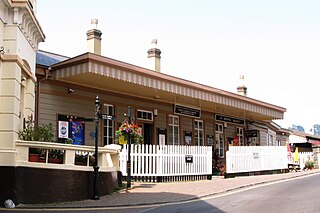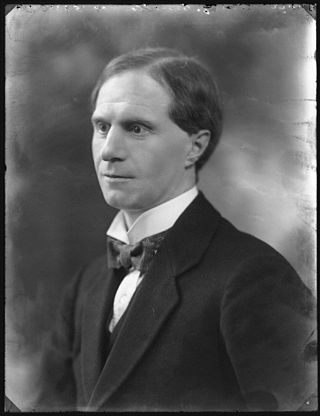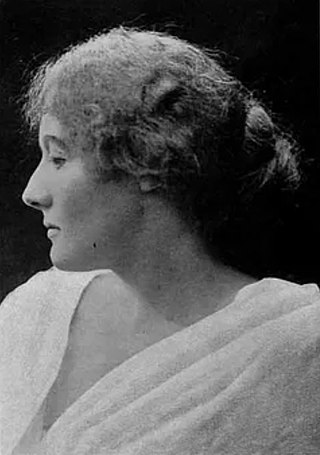
Henry Hyams was a British architect active in the early 20th century, mainly known for his design of two restaurants in Devon, and for two buildings in Battersea. He was an Esperanto instructor and in World War I, a conscientious objector.

Henry Hyams was a British architect active in the early 20th century, mainly known for his design of two restaurants in Devon, and for two buildings in Battersea. He was an Esperanto instructor and in World War I, a conscientious objector.



Henry Hyams is described in the Survey of London as an "obscure but intriguing figure". [1]
Hyams was a partner in the Paignton, Devon practice Hyams and Hobgen, and is noted as the architect of two restaurants in the county, the first a detached seaside café for Deller's Supply Stores in Paignton, the second a much larger multi-story design for Deller's in Exeter city centre, completed in 1916. Harold Clunn in his 1929 Famous South Coast Pleasure Resorts Past and Present described the Paignton cafe as one of the finest on the south coast. The Exeter cafe, galleried across three floors, was decorated with Arts and Crafts oak panelling and brightly coloured Art Nouveau plaster friezes. [2] Hyams' design for the Exeter cafe was selected for the Royal Academy Summer Exhibition in 1922. [3]
Hyams and Hobgen were also responsible for the Paignton Picture House, a 1914 construction and now the oldest surviving purpose-built cinema in Europe. [4]
Hyams was by 1922 a fellow of the Royal Institute of British Architects and in 1927 became a member of the Institution of Structural Engineers. [5]
Hyams is also associated with a number of buildings in Battersea, London, notably the 1924 Holgate Avenue's flats; [6] the 1926 reconstruction of the lower hall of Battersea Town Hall; [7] the 1924 Battersea Reference Library; [1] and the 1925-1927 Electric House on Lavender Hill. [8] Hyams had been appointed to a temporary post in Battersea Borough Council in 1924, which was converted to a permanent position three years later, albeit Hyams was made redundant three years after that. [5]
Paul Cleave suggests that Hyams' work was of a high artistic quality, and reflected his personality. He had traveled in Europe in the early 20th-century, perhaps an influence on his design choices. He was an expert in Esperanto, published in that language, noted in the Encyclopedia of Esperanto as an architect and artist, and acting as president of and an instructor for a Clapham-based Esperanto society in 1920. [9]
Hyams was a conscientious objector in World War I, facing imprisonment for his beliefs at around the time of the Exeter cafe's opening in December 1916. [3] A founder-member of the No-Conscription Fellowship, he had received an abolute exemption from service in March 1916 from a local Military Service Tribunal, but on an appeal by the military, was later imprisoned. [10]
In a 1921 article, Originality in Architecture Hyams argues against the teaching of old styles of architecture and the study of old architectural works, and in favour of encouraging the faculty by means of which the individual expresses himself and not another, seeing originality as "the highest mental activity of which we are capable". In particular he recommended a Guild approach to the building industries; encouragement of craftsmanship in which designers "get into close touch with his materials; and to give workmen a chance in the housing schemes of carrying out their own ideas. [11]

Sir Edwin Landseer Lutyens was an English architect known for imaginatively adapting traditional architectural styles to the requirements of his era. He designed many English country houses, war memorials and public buildings. In his biography, the writer Christopher Hussey wrote, "In his lifetime (Lutyens) was widely held to be our greatest architect since Wren if not, as many maintained, his superior". The architectural historian Gavin Stamp described him as "surely the greatest British architect of the twentieth century".

Ralph Adams Cram was a prolific and influential American architect of collegiate and ecclesiastical buildings, often in the Gothic Revival style. Cram & Ferguson and Cram, Goodhue & Ferguson are partnerships in which he worked. Cram was a fellow of the American Institute of Architects.

Paignton is a seaside town on the coast of Tor Bay in Devon, England. Together with Torquay and Brixham it forms the borough of Torbay which was created in 1968. The Torbay area is a holiday destination known as the English Riviera. Paignton has origins as a Celtic settlement and was first mentioned in 1086. It grew as a small fishing village and a new harbour was built in 1847. A railway line was opened to passengers in 1859 creating links to Torquay and London. As its population increased, it merged with the villages of Goodrington and Preston. Paignton is around 25 miles (40 km) north east of Plymouth and 20 miles (32 km) south of Exeter.

Oldway Mansion is a large house and gardens in Paignton, Devon, England. It was built as a private residence for Isaac Singer (1811–1875), and rebuilt by his son Paris Singer, in the style of the Palace of Versailles.

John Rodker was an English writer, modernist poet, and publisher of modernist writers.

The Riviera Line is the railway between the city of Exeter, towns Dawlish and Teignmouth, and the English Riviera resorts of Torbay in Devon, England. Its tracks are shared with the Exeter to Plymouth Line along the South Devon sea wall. It is part of the Network Rail Route 12.

Exeter St Davids is the principal railway station serving the city of Exeter in Devon, England. It is 193 miles 72 chains from the zero point at London Paddington on the line through Bristol which continues to Plymouth and Penzance. It is also served by an alternative route to London Waterloo via Salisbury and branch lines to Exmouth, Barnstaple, and Okehampton. It is currently managed by Great Western Railway and is served by trains operated by Great Western Railway, South Western Railway and CrossCountry.

Dawlish railway station is on the Exeter to Plymouth line and serves the seaside resort town of Dawlish in Devon, England. It is located 206 miles 7 chains (331.7 km) from London Paddington, via Box.

The Dartmouth and Torbay Railway was a broad gauge railway linking the South Devon Railway branch at Torquay with Kingswear in Devon, England. It was operated from the outset by the South Devon Railway.
Montagu Christie Butler was a British academic, librarian, lexicographer, musician, and Esperantist. A winner of several prizes at the Royal Academy of Music in London, he was a harpist and a versatile music teacher skilled in playing various musical instruments, as well as a teacher of voice and of musical composition.

Devon General was the principal bus operator in south Devon from 1919. The name was first used by the Devon General Omnibus and Touring Company which was created in 1919. In 1922 it was purchased by the National Electric Construction Company which merged with British Electric Traction in 1931. Nationalisation in 1969 resulted in 1971 with the company being merged into Western National. In 1983 a new Devon General Limited was created which became the first operating subsidiary of the National Bus Company to be privatised in 1986 when it became the first company of Transit Holdings. It was sold to the Stagecoach Group in 1996 and renamed Stagecoach Devon in 2003.

Sir Leonard Wilfred James Costello was an English barrister, college lecturer, soldier and colonial judge who was also a Liberal Party politician.

Henry Vaughan Lanchester was a British architect working in London. He served as editor of The Builder, was a co-founder of the Town Planning Institute and a recipient of the Royal Gold Medal.

Herbert William Charles Kempton Dyson, M.I.Struct.E. (1880–1944), known professionally as H. Kempton Dyson, was an English structural engineer, civil engineer, architect, editor and author who specialised in reinforced concrete structures. He was a founder member and the first permanent secretary of the Concrete Institute, which became the Institution of Structural Engineers. He designed the Central Bandstand, Herne Bay in 1924.

Battersea Reference Library is a reference library within a Grade II listed building at Altenburg Gardens, Battersea, London, England.
Cadena Cafés Limited was a chain of coffeehouses in South West England. It was established in 1895 under the name Lloyd's Oriental Café, subsequently Lloyd's Cadena Cafés Ltd. It became Cadena Cafés Ltd in 1907 and went on to operate over twenty branches. It took over Paignton-based Dellers Cafés in 1933. It was eventually taken over by Tesco in January 1965 and the cafés closed during the 1970s. It was listed on the Bristol Stock Exchange; from 1927 to at least 1950, its AGMs were fully reported by the Western Daily Press.

Hetta Bartlett was an English stage and film actress whose career spanned both the West End and Broadway. She is known for Sonia (1921), The Lady of the Lake (1928) and Honour in Pawn (1916).

Edward Arthur Fellowes Prynne (1854–1921) was a leading British late Pre-Raphaelite painter of portraits and subject pictures, who in later life became one of the country's best-known creators of decorative art for churches.

James Scott Duckers also J. Scott Duckers, was an English lawyer, and prominent pacifist organiser and conscientious objector of World War I. He is now best known for his wartime memoir Handed Over.

Electric House was an electricity showroom building built on Lavender Hill, Battersea, London, England, by Battersea Borough Council. The building, opened in 1927, was broadly to a design by Henry Hyams, and was described as combining a 'fin-de-siècle manner' with 'up-to-the-minute Art Deco taste'. It was demolished in 1985.